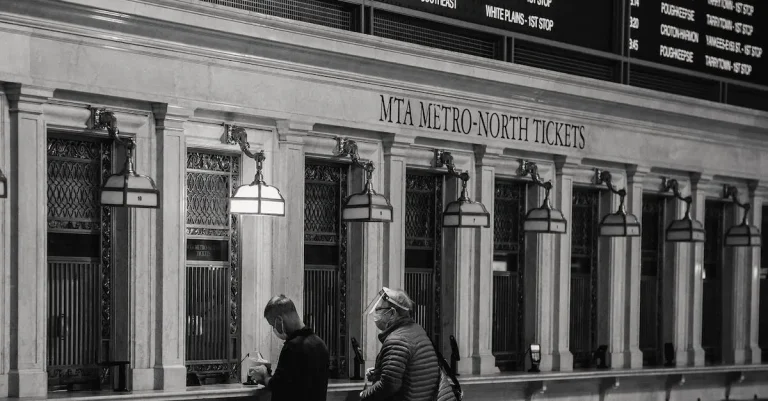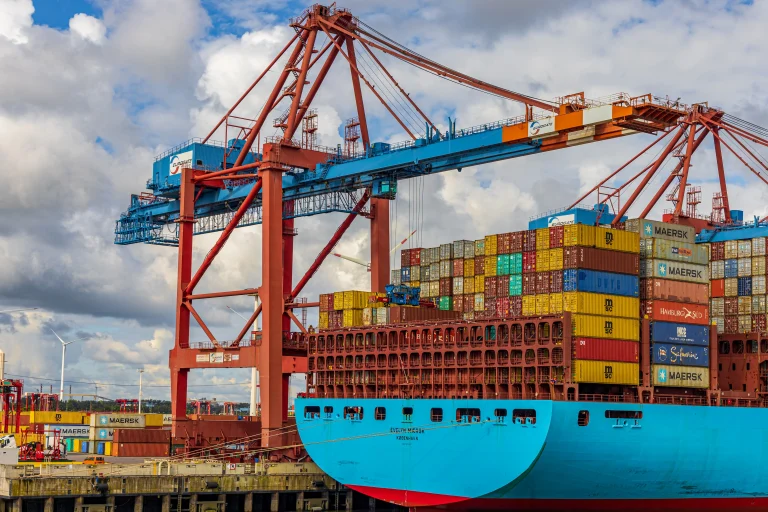Is The Chicago River Man-Made? A Detailed History
The Chicago River has been an integral part of the city’s growth and development over the past two centuries. If you’re short on time, here’s a quick answer: While the Chicago River existed naturally, humans have heavily altered its course and flow. The river was crucial for early fur trade and industrialization, prompting massive engineering projects to reverse its flow and build canals.
In this approximately 3000 word article, we will dive into the fascinating history of how humans have dramatically shaped the Chicago River over time. We will explore the river’s origins, how it was manipulated to serve economic needs, and the environmental impacts of these changes. Key topics will include: the natural geology that formed the river, early Native American and European settlement, reversing the river’s flow, industrial development and pollution, the Chicago Sanitary and Ship Canal, and modern riverwalk development and conservation efforts.
The Chicago River’s Natural Origins
The history of the Chicago River is a fascinating tale of both natural and man-made influences. While the river itself has been altered significantly over the years, it began as a natural waterway with important connections to the surrounding environment.
The Chicago Portage – a Crucial Passageway
One key aspect of the Chicago River’s natural origins is its connection to the Chicago Portage. The Chicago Portage was a critical passageway between the Great Lakes and the Mississippi River watershed.
This geographic feature allowed early settlers and explorers to transport goods and navigate between these two major water systems.
The Chicago River played a vital role in this transportation network, serving as a link between Lake Michigan and the Illinois River. Its location made it a strategic point for trade and travel, which eventually led to the development of the city of Chicago.
In the early days, the Chicago Portage was a narrow strip of land between the Chicago River and the Des Plaines River. This natural land bridge was crucial for Native American tribes and early European settlers to traverse the waterways and access new territories.
Early Native American Settlement Along the Banks
Long before European settlers arrived in the area, Native American tribes recognized the strategic importance of the Chicago River. The river provided a source of fresh water, fish, and transportation, making it an ideal location for settlement.
Native American tribes such as the Miami, Illinois, and Potawatomi utilized the resources of the Chicago River for thousands of years. They established villages along its banks, utilizing the river for travel, fishing, and trade.
These early settlements along the Chicago River were an integral part of the region’s history and played a role in shaping the future development of the area. Today, we can still see traces of these Native American influences in the city’s culture and heritage.
For more information on the history of the Chicago River, you can visit www.chicagoriver.org, a website dedicated to preserving and promoting the river’s natural and cultural significance.
Reversing the Flow of the Chicago River
The reversal of the Chicago River is one of the most remarkable engineering achievements in the history of urban planning. This ambitious project was undertaken to address the issue of sewage contamination in Lake Michigan, which was the city’s main source of drinking water.
In the late 19th century, Chicago’s rapid industrialization and population growth had led to a significant increase in sewage discharge into the river.
Sending Sewage Away from Lake Michigan Drinking Water
Prior to the reversal, the Chicago River flowed into Lake Michigan, causing the sewage to contaminate the city’s drinking water supply. This posed a serious health hazard to the growing population. To overcome this challenge, the city devised a plan to divert the flow of the river away from Lake Michigan and towards the Mississippi River.
The first step in the process involved constructing a canal, known as the Chicago Sanitary and Ship Canal, which connected the Chicago River to the Des Plaines River. This new canal provided an alternative route for the sewage-laden water to be sent away from Lake Michigan.
By reversing the flow of the river, Chicago was able to protect its drinking water supply and improve the overall health and well-being of its residents. This innovative solution not only solved the immediate problem of sewage contamination but also paved the way for future urban planning and engineering projects.
The Incredible Engineering Feat
The reversal of the Chicago River was an engineering marvel of its time. The construction of the Chicago Sanitary and Ship Canal required extensive excavation and the use of advanced engineering techniques.
It involved digging a canal that spanned over 28 miles and required the removal of more than 40 million cubic yards of earth.
Additionally, the project required the installation of massive pumping stations to redirect the flow of the river. These pumping stations, such as the famous “Bridgeport Pumping Station,” were equipped with powerful steam engines that could move vast amounts of water.
The engineering team also had to overcome various challenges, including building locks and dams to control water levels and ensure the smooth flow of the river.
The successful completion of the project in 1900 was a testament to the ingenuity and determination of the engineers and workers involved. It not only solved the immediate problem of sewage contamination but also had a lasting impact on the development of the city.
To learn more about the history and engineering behind the reversal of the Chicago River, you can visit the Friends of the Chicago River website, which provides comprehensive information and resources.
The Chicago River as an Industrial Waterway
The Chicago River, which flows through the heart of the city, has played a crucial role in Chicago’s history as a major industrial waterway. Its development as a key transportation route and industrial hub can be traced back to the 19th century.
The Opening of the Illinois & Michigan Canal
The transformation of the Chicago River into an industrial waterway began with the opening of the Illinois & Michigan Canal in 1848. This canal connected the Great Lakes with the Mississippi River, providing a vital route for the transportation of goods.
The canal’s opening allowed for the easy movement of raw materials and finished products between the East Coast and the growing city of Chicago.
The Illinois & Michigan Canal not only made the Chicago River an important transportation route, but it also spurred economic growth and development in the region. The canal attracted businesses and industries, leading to the establishment of factories, warehouses, and other industrial facilities along the river’s banks.
Rampant Pollution from Factories and Stockyards
As industrialization boomed in Chicago, the Chicago River became a victim of rampant pollution. Factories and stockyards lining the river dumped their waste directly into the water, turning it into a cesspool of filth and pollution.
The river’s once-clear waters became contaminated with industrial chemicals, animal waste, and other pollutants.
The pollution of the Chicago River reached such alarming levels that it became a serious public health concern. The foul smell and contaminated water posed a threat to the city’s residents, leading to outbreaks of waterborne diseases.
In response to the growing pollution problem, various initiatives were implemented to clean up the river. The construction of the Chicago Sanitary and Ship Canal in the early 20th century helped divert the polluted water away from Lake Michigan, improving the water quality of the river.
Today, the Chicago River continues to serve as an important waterway for both recreational and commercial purposes. Efforts to improve water quality and restore the river’s ecosystem are ongoing, and the river has become a popular attraction for residents and tourists alike.
For more information on the history and current state of the Chicago River, visit the official website of the Friends of the Chicago River: https://www.chicagoriver.org/
The Chicago Sanitary and Ship Canal
The Chicago Sanitary and Ship Canal played a crucial role in the transformation of the Chicago River. Prior to its construction, the river was primarily used for commercial purposes and was heavily polluted due to the city’s waste disposal practices.
As a result, the river became a breeding ground for diseases and a threat to public health. The construction of the canal aimed to address these issues and provide a solution for the city’s sanitation problems.
Providing Further Separation from Lake Michigan
One of the main purposes of the Chicago Sanitary and Ship Canal was to provide further separation between the Chicago River and Lake Michigan. The canal, which is over 28 miles long, created a direct connection between the Chicago River and the Des Plaines River, effectively diverting the city’s waste away from the lake.
This separation helped to protect the quality of the drinking water supply for Chicago and its surrounding areas.
Furthermore, the canal also served as a major transportation route, allowing ships to bypass the congested downtown area and connect to the Mississippi River system. This helped to boost the city’s economy and establish it as a prominent hub for trade and commerce.
Controversy Over Invasive Species
While the construction of the Chicago Sanitary and Ship Canal brought numerous benefits to the city, it also sparked controversy due to the introduction of invasive species into the Great Lakes ecosystem.
One of the most notable examples is the Asian carp, which has posed a significant threat to native fish populations in the region.
The canal provided a pathway for these invasive species to enter the Great Lakes, as they were able to bypass existing barriers and spread rapidly throughout the waterways. Efforts have been made to control and prevent the further spread of these species, but the issue remains a significant concern for environmentalists and policymakers.
For more detailed information on the history of the Chicago Sanitary and Ship Canal, you can visit https://www.epa.gov/greatlakes/chicago-area-waterway-system.
Conservation Efforts and the Modern Chicago Riverwalk
Over the years, the Chicago River has undergone a remarkable transformation, thanks to the dedicated efforts of conservationists and city officials. The river, once heavily polluted and neglected, has become a symbol of environmental restoration and urban revitalization.
One of the most significant developments in this transformation is the creation of the Chicago Riverwalk, a vibrant pedestrian waterfront promenade that stretches along the main branch of the river.
Cleaning Up Decades of Pollution
The Chicago River was once heavily polluted, primarily due to the city’s industrial activities and inadequate sewage treatment systems. Decades of industrial waste and raw sewage had turned the river into a foul-smelling and contaminated waterway.
However, in the late 20th century, a series of cleanup initiatives were launched to restore the river’s water quality.
These efforts included the construction of wastewater treatment plants, the implementation of strict pollution control regulations, and the removal of industrial pollutants from the river. As a result, the water quality has significantly improved, allowing for the return of aquatic life and creating a healthier ecosystem.
According to a report by the Environmental Protection Agency (EPA), the water quality in the Chicago River has improved by 70% since the 1980s. This remarkable turnaround is a testament to the effectiveness of conservation efforts and the commitment to restoring the river’s natural beauty.
Developing Access and Recreation
In addition to cleaning up the river, the city of Chicago recognized the potential of the Chicago River as a recreational and cultural asset. The development of the Chicago Riverwalk was an important step in creating public access to the river and providing amenities for residents and visitors.
The Chicago Riverwalk stretches for 1.25 miles and offers a range of recreational activities, including kayaking, boating, and fishing. It also features beautifully landscaped areas, outdoor seating, and various dining options, making it a popular destination for locals and tourists alike.
The Riverwalk has not only enhanced the quality of life for Chicago residents but has also contributed to the city’s economic growth. According to a study conducted by the Chicago Department of Transportation, the Riverwalk generates an estimated $37 million in annual revenue and supports over 800 jobs.
The success of the Chicago Riverwalk has inspired other cities around the world to develop similar waterfront projects, recognizing the importance of preserving and utilizing urban rivers for the benefit of both people and the environment.
For more information on the Chicago Riverwalk and its history, you can visit the official website of the Chicago Riverwalk.
Conclusion
In conclusion, while the Chicago River originated naturally, its flow and purpose have been dramatically altered by human activity over two centuries. As Chicago grew into a bustling industrial center, the river was engineered to serve economic needs – most strikingly by reversing its flow entirely. While this provided crucial sanitation and shipping access, it also polluted the river and disrupted regional ecosystems. In recent decades conservation efforts have helped restore the river, as exemplified by the popular Riverwalk. However, its essential man-made nature remains clear. The Chicago River’s story provides a fascinating look at how urban waterways can be reshaped to serve human ends.








